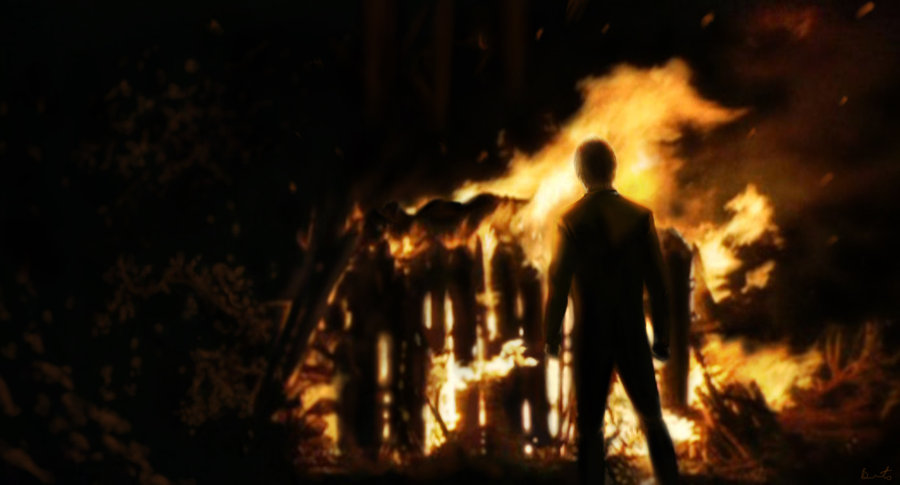When a person is on their deathbed, the funeral process begins by having every single member of their family come to their room, one at a time, and light a candle or a stick on incense and place them around the dying person's bed. After they've set the item down, the family member will approach the bed, speak their last words with the dying person and the two will rub three lines of oil on each other's faces; one horizontal line on each cheek and a vertical one on the forehead. This exchanging of oil is to signify the two people are essential to one another and the lines are thought to stay on their faces after death so when their spirits meet in the afterworld they can recognize one another. When everyone has spoken to and exchanged oil with the person in the twilight of their life, they will all enter the room and surround the ring of candles and incense and sing songs throughout the night, even after their loved one has passed until the last of the candles has burnt out. If the person has died suddenly or in an accident, the family members will still rub oil on to their faces but will skip everything else.
The family will then carry the deceased out of their house and through the streets, yelling and crying out in pain and sorrow. Their procession will be joined by anyone who was a friend of the deceased who will add their voices to the wordless cries of grief until the group reaches the center of the town. There they will set the body down on the permanent stone altar and every member of the procession will leave for the marsh with axes and chop down three trees: a birch, an oak, and a willow. The birch is believed by the Rushil people to represent new beginnings, purification, and protection while the oak is believed to represent strength, fertility, and health and finally the Willow is supposed to represent love, friendship, and peace. The chopped oak will then be used to make up the bottom of the pyre, in the center, where the body will be placed, the chopped willow will be placed and finally making up the top of the pyre will be the chopped pieces of birch. Once the pyre is built, the person's favorite flower or plant will be placed over every piece of wood until the whole thing is covered.
The mourners will then take torches and one at a time will touch their torch to the bottom of the pyre. The remaining spouse, if they are still alive, will be the first one to do so, followed by the deceased's parents and children then their siblings and nieces and nephews then their friends and cousins until everyone's torch is touching the oak logs.
When the willow logs start to catch fire, the mourners will step away and once again start singing as their loved one's spirit is freed from its body.
When the fire has fully consumed the pyre and burnt itself out the people will stop singing and after waiting for it to cool down a little, will gather up the ashes in their hands. The ash will then be taken to the family's plot of land where they will be spread on the ground.
If for some reason, the body of a loved one was unable to be retrieved because of war or an accident at sea, the family would still perform the ritual minus the parts that involve touching the body. It is believed that so long as a person has exchanged oil markings with at least some family members, such as grandparents, older relatives, or sick family members who die young, that those they shared the oil with, will lead their lost person's family back home in the spirit world.

What the Rushil do for their dead made me teary eyed. That they start the ritual by singing to their loved one while they die to them crying as they bring them down the streets, then how they each partake in burring the body, it's such a sorrow filled event. That being said, what if they had a loved one whose body was unrecoverable?
They would still perform the rite minus the parts where they physically interact with the body. There wouldn't be any fear of their loved one not finding them as they had likely drawn oil on the faces of their grandparents and any loved one who had died and that loved one's spirit would lead them to everyone else in the spirit world.